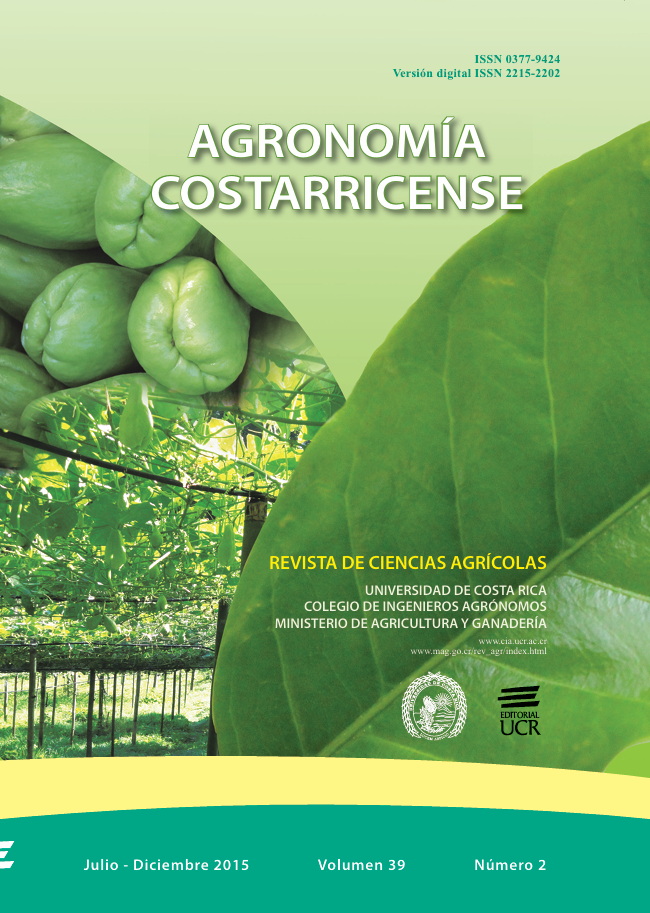Abstract
The risk of microbiological or chemical contamination was determined in each of the processes of the production system of produce for fresh consumption, in a population of 164 agricultural companies in the Central Valley of Costa Rica. The risk quantification was calculated using the responses to a 46-item survey conducted with the managers of the companies included in the study. The responses to the 46 items were grouped according to the production process; the risk contamination calculation formula validated by the authors in another study was used to obtain the risk value per process. The microbiological or chemical contamination risk results were calculated for the land preparation and planting process, cultural management of the crop, human factor performing the cultural management of the crop, phytosanitary control, harvesting, packaging, and the human factor involved in packaging. The risk analysis results indicate that the human factor participating in the packaging obtains the highest risk rating, followed by the cultural management of the crop and, in third place, by the harvesting process. In all processes where the risk was quantified, the results showed values close to or greater than 50 in a 0 to 100 risk scale. These results should alert producers and consumers of produce for fresh consumption in the analyzed population. The effect of the buyer on the packaging risk values was also observed; when the producers are supermarket chain suppliers the risk values are lower as compared to those of producers who are not supermarket chain suppliers.
References
AMEKAWA Y. 2009. Reflections on the growing influence of Good Agricultural Practices in the Global South. Journal of Agricultural and Enviromental Ethnis 22:531-557.
ANDREW G., GEHRING S. 2011. High Throughput Biosensors for Multiplex Food-Borne Pathogen Detection. Annu. Rev. Anal. Chem. 4(1):51-72. BHUNIA A. 2008. Biosensors and bio-based methods for the separation and detection of foodborne pathogens. Adv. Food Nutr. Res. 54:1-44.
BROWN D.L. 2009. Food Availability and Quality: Situations and Opportunities in Developing Countries, pp. 405- 413. In: D. Wilson, G. Pond, and B.L.L. Brown, Adequate Food for All. CRC Press.
DUFFY B., SARREAL C., RAVVA, S., STANKER L. 2004. Effect of molasses on regrowth of E. coli O157:H7 an Salmonella in compost tea. Compost Science & Utilization 12:93-96.
FAO. 2008. Exposure assessment of microbiological hazards in food. Microbiological Risk Assessment Series. Seattle USA: FAO. 102 p.
ESPINOSA F. 2012. Procedimiento para evaluar el riesgo de la innovación en la gestion de mantenimiento industrial. Revista Chilena de Ingeniería 20(2):242- 254.
FULPONI L. 2010. Impacto de los estándades y regulaciones sobre las cadenas agroexportadoras a nivel mundial. Impacto de las Regulaciones y Normas Internacionales de Calidad, Talca: GLOBAL G.A.P. pp. 1-31.
JUST R., DAVID K., SIVALAI J., RICHARD E. 2010. Empirical Changes for Risk Preserences and Production. Annu. Rev. Resour. Econ. 2:13-31.
HERZFELD T., DRESCHER L.S., GREBITUS C. 2011. Cross-national adoption of private food quality standards. Food Policy 36:401-411.
LOPEZ G., TOMAS A., DIRIBSA D. WEI P. SUSLOW T.V. 2013. Growth of Salmonella enterica in foliar pesticide solutions and its survival during field production and postharvest handling of fresh market tomato. Journal of Applied Microbiology 114 (5):1547-1558.
MEI S., JAN B., RICHARD N. 2013. Perceptual and Actual Risks and How We Comunicate Them, pp. 189-208. In: S. Mei, B. Jan and N. Richard (eds.). Managing Food Safety Risks in the Agri-Food Industies. CRC Press.
MORALES H., HERNÁNDEZ A., QUIROZ R., SUSLOW V. 2009. Detection of Salmonella spp. on Cantaloupe Melon Production Unist and Packing Facility. Agricultura Técnica en Mexico 32(2):135-145. NG P.,
FLEET G., HEARD G.M. 2005. Pesticides as a source of microbial contamination of salad vegetables. International Journal of Food Microbiology 237-250.
ODU N., NMA O., ORUESE M. 2013. Prevalence of Salmonella species and Escherichia coli in fresh Cabbage and Lettuce sold in Port Harcourt Metropolis. Report and Opinion. pp. 1-8.
PERGHER G., PETRIS R. 2008. Pesticide dose adjustment un vineyard sprayin and potential for dose reduction. Agricultural Engineering International: the CIGR Ejournal. Manuscript 10:1-9.
PORTER M.E. 2009. Estrategia Competitiva: Técnicas para el análisis de las empresas y sus competidores. Madrid: Piramide, 456 p.
VARGAS G., GONZÁLEZ M.I., DURÁN A. MORA D. 2015. Diseño y validación de un sistema para cuantificar riesgos de contaminación y su aplicación para identificar puntos críticos de control en cultivos hortícolas en Costa Rica. Agronomía Costarricense. 39(2):153-166.
##plugins.facebook.comentarios##

This work is licensed under a Creative Commons Attribution-NonCommercial-NoDerivatives 4.0 International License.
Copyright (c) 2016 Agronomía Costarricense


